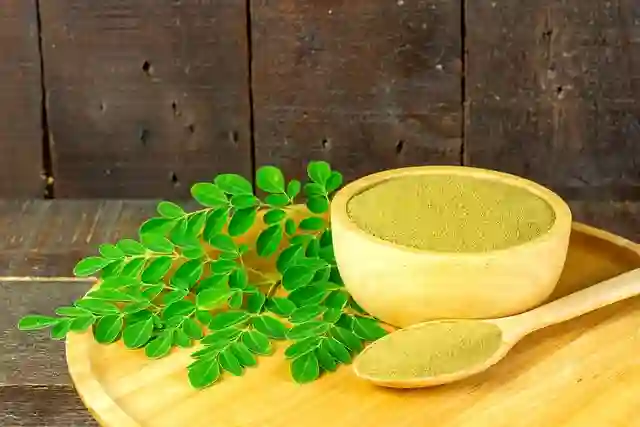Everything You Need to Know About Antioxidant Sources, Health Benefits, Juicing Equipment and Recipes
If you’re looking to boost your health and wellness, incorporating antioxidants into your diet is a great place to start. In this comprehensive guide, we’ll cover everything you need to know about antioxidant sources, health benefits, juicing equipment, and recipes.
Table of Contents
Antioxidant Sources
Antioxidants are substances that can help prevent or slow damage to cells caused by free radicals. Here are some of the best antioxidant sources:
Blueberries
Blueberries are an antioxidant-rich fruit. These versatile little fruits boost heart health, cognitive function, and the immune system, and you can consume them fresh or frozen. In addition, they contain high levels of vitamin C, vitamin K, and fiber.
Blueberries are also low in calories, making them a great option for those looking to maintain a healthy weight. Their antioxidant properties help protect the body against cellular damage, inflammation, and oxidative stress. Incorporating blueberries into your diet is a simple way to add a burst of nutrition to your meals or snacks.
Spinach and kale
Nutrient-packed leafy greens, spinach and kale, have high levels of antioxidants, vitamins, and minerals. They are low in calories and can be easily incorporated into meals. Both spinach and kale contain high levels of vitamin K, which is essential for bone health. They are also rich in vitamin C, iron, and folate, which are crucial for the immune system, blood production, and overall health.
These greens also contain beneficial compounds like lutein and zeaxanthin that support eye health. Incorporating spinach and kale into your diet is a great way to boost your antioxidant intake, protect against cellular damage, and maintain a healthy lifestyle.
Ginger and turmeric
They are two spices with potent anti-inflammatory properties that can help reduce cellular damage. Ginger contains gingerols and shogaols, and turmeric has curcumin, all of which reduce inflammation, improve brain function, and lower chronic disease risk.
They also contain antioxidants that help protect cells from oxidative stress and damage. Ginger helps with nausea and digestive issues, and turmeric may support heart health and alleviate joint pain. Incorporating ginger and turmeric into your diet is an easy way to add flavor to your meals while reaping their many health benefits.
Acai and pomegranate
Antioxidant-rich fruits like acai and pomegranate are convenient to add to smoothies or eat as a snack. Acai’s anthocyanins improve heart health and brain function, while pomegranate’s polyphenols reduce inflammation, blood pressure, and improve cholesterol levels. These fruits are also low in calories and high in fiber, which can help you feel full and satisfied. Incorporating acai and pomegranate into your diet is a delicious way to improve your health and protect against cellular damage.
Beets and carrots
Two root vegetables, beets and carrots, pack antioxidants and important nutrients. Betalains, found in beets, give the vegetable its vibrant color and have anti-inflammatory properties. Carrots are high in beta-carotene, which the body converts to vitamin A and is essential for eye health.
Both vegetables also contain fiber, which helps regulate digestion and keeps you feeling full. You can roast, steam, or add beets and carrots to salads and soups. These versatile vegetables are a great way to add a burst of color and nutrition to your diet, while also protecting your cells against damage and inflammation.
Wheatgrass and spirulina
Two superfoods known for their high nutrient content, including antioxidants, vitamins, and minerals, are wheatgrass and spirulina. Wheatgrass, which is a rich source of chlorophyll, has antioxidant and anti-inflammatory properties. It also contains high levels of vitamins A, C, and E, which help support the immune system and promote healthy skin.
Spirulina is a blue-green algae that is a complete protein source and is rich in B vitamins, iron, and antioxidants. You can consume both wheatgrass and spirulina in powder form, add them to smoothies, or take them as supplements. These superfoods are a great way to boost your antioxidant intake, support overall health, and protect your cells against damage and inflammation.
Goji berries and chia seeds
They are two nutrient-dense foods that are rich in antioxidants and other important nutrients. Goji berries are a great source of vitamin C, which helps support the immune system and promotes healthy skin. They also contain high levels of zeaxanthin and lutein, which support eye health.
Chia seeds are rich in fiber, omega-3 fatty acids, and calcium, making them a great option for those looking to maintain healthy bones and regulate digestion. You can add both goji berries and chia seeds to smoothies, oatmeal, or salads. These small but mighty foods are a convenient and delicious way to add a burst of nutrition to your diet, while also protecting your cells against damage and inflammation.
Matcha and cacao
There are two powders that you can easily incorporate into your diet that are rich in antioxidants. Matcha is a green tea powder that contains catechins, which have antioxidant and anti-inflammatory properties. Raw chocolate powder, known as cacao, is also rich in flavanols that can help improve heart health and cognitive function.
You can add both powders to smoothies, oatmeal, or use them in recipes to add flavor and nutrition. They are also low in calories and high in fiber, making them a great option for those looking to maintain a healthy weight. Incorporating matcha and cacao into your diet is a delicious way to protect your cells against damage and inflammation, while also reaping their many health benefits.
Moringa
Moringa is a superfood that is rich in antioxidants and anti-inflammatory compounds. This tree leaf is a great source of vitamins A, C, and E, which help support the immune system, promote healthy skin, and protect against cellular damage. Moringa also contains high levels of calcium, iron, and protein, making it a great option for those looking to maintain healthy bones and muscles.
Furthermore, Moringa contains chlorogenic acid and quercetin, two compounds that research has found to have anti-inflammatory and blood sugar-lowering effects. You can consume Moringa as a tea, powder, or in supplement form, making it a convenient and easy way to boost your antioxidant intake and support overall health.
Health Benefits
Antioxidants have numerous health benefits, including:
Immune system support
Antioxidants play a key role in supporting the immune system by protecting cells from damage. The immune system relies on healthy cells to function properly and fight off pathogens. Antioxidants help protect cells from oxidative stress and inflammation, both of which can weaken the immune system.
Additionally, many antioxidant-rich foods, such as berries, leafy greens, and nuts, also contain vitamins and minerals that are important for immune function. Consuming a variety of antioxidant-rich foods can help support the immune system and keep it functioning optimally. While antioxidants alone may not prevent illness, they can help support overall health and may play a role in reducing the risk of chronic diseases.
Anti-aging properties
Antioxidants have anti-aging properties that can help slow cellular aging and reduce the appearance of wrinkles and other signs of aging. They work by protecting cells from oxidative stress and inflammation, both of which can contribute to aging. Antioxidants may also help stimulate collagen production, which is important for maintaining skin elasticity and firmness.
Researchers have found that compounds in many antioxidant-rich foods, such as berries, green tea, and dark chocolate, have anti-aging effects. Consuming a diet rich in antioxidants can help promote healthy aging and reduce the risk of age-related diseases. While they may not reverse the effects of aging completely, antioxidants can help keep you looking and feeling your best.
Anti-inflammatory effects
Antioxidants have anti-inflammatory effects that can help reduce inflammation in the body, which can help prevent chronic diseases. Inflammation is a natural response to injury or infection, but when it becomes chronic, it can contribute to the development of conditions such as heart disease, diabetes, and cancer. Antioxidants work by neutralizing free radicals and reducing oxidative stress, which can trigger inflammation.
Many antioxidant-rich foods, such as fatty fish, nuts, and leafy greens, also contain omega-3 fatty acids and other anti-inflammatory compounds. Consuming a diet rich in antioxidants can help lower inflammation levels and reduce the risk of chronic diseases. While they may not cure inflammation completely, antioxidants can help promote a healthier, more balanced immune system.
Detoxification
Antioxidants can aid in detoxification by removing toxins from the body and supporting liver function. The liver is responsible for filtering toxins from the bloodstream, but it can become overwhelmed when exposed to high levels of toxins. Antioxidants work by neutralizing free radicals and reducing oxidative stress, which can help support the liver and promote detoxification.
Many antioxidant-rich foods, such as cruciferous vegetables, berries, and herbs, also contain compounds that support liver function, such as sulforaphane and silymarin. Consuming a diet rich in antioxidants can help support the liver and promote efficient detoxification. While they may not be a replacement for medical treatment, antioxidants can play a valuable role in promoting overall health and well-being.
Energy boost
Antioxidants can help boost energy levels and improve overall vitality. Free radicals and oxidative stress can cause fatigue and reduce energy levels by damaging cells and interfering with mitochondrial function. Antioxidants work by neutralizing free radicals and reducing oxidative stress, which can help improve cellular function and boost energy levels.
Many antioxidant-rich foods, such as fruits, nuts, and whole grains, also contain fiber and other nutrients that support energy production. Consuming a diet rich in antioxidants can help improve energy levels and promote overall vitality. While they may not be a replacement for adequate sleep and exercise, antioxidants can play a valuable role in promoting a healthy, energetic lifestyle.
Juicing Equipment
If you’re looking to incorporate more antioxidants into your diet, juicing is a great option. Here are some of the best juicing equipment options:
Masticating juicer
A masticating juicer is a type of juicer that uses a slow, gentle press to extract juice, which preserves more nutrients and enzymes than other juicer types. This process involves crushing fruits and vegetables with a slowly rotating auger, which separates the juice from the pulp. Because the process is slow and gentle, it generates less heat and oxidation, which can damage nutrients and enzymes.
As a result, juices made with a masticating juicer are often more nutritious and have a longer shelf life than those made with other types of juicers. A masticating juicer often produces drier pulp, which means it extracts more juice from the fruits and vegetables. A masticating juicer is a great investment for those looking to maximize the nutritional value of their juices.
Centrifugal juicer
A centrifugal juicer is a type of juicer that uses a high-speed spinning blade to extract juice quickly. This process involves chopping fruits and vegetables with a fast-spinning blade, which separates the juice from the pulp. Because the process is quick, it generates more heat and oxidation than other types of juicers, which can damage nutrients and enzymes.
As a result, juices made with a centrifugal juicer may have less nutritional value and a shorter shelf life than those made with other types of juicers. A centrifugal juicer often produces wetter pulp, which means it extracts less juice from the fruits and vegetables. While a centrifugal juicer is a more affordable option, it may not be the best choice for those looking to maximize the nutritional value of their juices.
Cold press juicer
A cold press juicer, also known as a hydraulic press juicer, is a type of juicer that uses hydraulic pressure to extract juice, resulting in minimal oxidation and nutrient loss. This process involves pressing fruits and vegetables between two plates, which squeezes out the juice without producing heat or friction. Because the process is slow and gentle, it preserves more nutrients and enzymes than other types of juicers.
As a result, juices made with a cold press juicer are often more nutritious and have a longer shelf life than those made with other types of juicers. A cold press juicer often produces very dry pulp, which means the juicer extracts more juice from the fruits and vegetables. A cold press juicer is a great investment for those looking to maximize the nutritional value of their juices.
Blender
A blender is a versatile option for making smoothies and juices with a variety of fruits and vegetables. Unlike juicers, blenders retain the fiber and pulp of the fruits and vegetables, which can help slow down the absorption of sugars and promote feelings of fullness. This can be particularly beneficial for those looking to manage blood sugar levels and maintain a healthy weight.
Additionally, blenders are often more affordable and easier to clean than juicers, making them a convenient option for daily use. While blenders may not extract as much juice as a juicer, they can still be a great way to incorporate antioxidant-rich foods into your diet and enjoy a delicious and nutritious beverage.
Glass bottle
A glass bottle is a great way to store your freshly made juices and smoothies, as it doesn’t leach any harmful chemicals into your drink. Plastic bottles can contain harmful chemicals like BPA, which can leach into the liquid and have negative health effects. Glass bottles are a safer alternative as they are non-toxic, reusable, and easy to clean.
Additionally, glass bottles can help preserve the flavor and freshness of your drinks, especially if stored in a cool, dark place. Glass bottles come in a variety of sizes and shapes and are widely available at grocery stores and online retailers. Investing in a glass bottle is a simple and effective way to enjoy your homemade juices and smoothies while minimizing your exposure to harmful chemicals.
Stainless steel straw
A reusable stainless steel straw is an eco-friendly way to sip your juices and smoothies. Unlike plastic straws, which can take hundreds of years to decompose and pollute the environment, stainless steel straws are durable, easy to clean, and you can use them over and over again.
Additionally, using a stainless steel straw can help reduce your exposure to harmful chemicals found in plastic straws. Stainless steel straws come in a variety of sizes and styles and are widely available at kitchen stores and online retailers. You can use them at home or on the go, and they offer a simple yet effective way to promote sustainable living and reduce waste.
Nut milk bag
A nut milk bag is a useful tool for straining juice or making homemade nut milk. Made of fine mesh fabric, it effectively separates the liquid from the pulp, resulting in a smooth and silky texture. Unlike traditional cheesecloth or paper filters, nut milk bags are reusable, easy to clean, and don’t leave any residue or fibers in the liquid.
Nut milk bags also work great for making cold brew coffee, tea, or infused water and straining out seeds, pits, and other small particles. Anyone interested in making their own nutritious and delicious beverages at home must have them since they are available in different sizes and materials.
Recipes
Ready to start juicing? Here are some delicious and nutritious recipes to try:
Green Juice
- 1 cup spinach
- 1 cup kale
- 1 cucumber
- 1 lemon
- 1 green apple
Carrot Juice
- 4 carrots
- 1 orange
- 1 inch piece of ginger
Ginger Shot
- 1 inch piece of ginger
- 1 lemon
Lemon Water
- 1 lemon
- 1 cup of water
Detox Smoothie
- 1 cup spinach
- 1 cup frozen berries
- 1 banana
- 1 tablespoon chia seeds
- 1 cup almond milk
Beet Juice
- 1 beet
- 2 carrots
- 1 apple
- 1 inch piece of ginger
Turmeric Tea
- 1 teaspoon turmeric powder
- 1 cup boiling water
- 1 teaspoon honey
- 1/4 teaspoon black pepper (to help with turmeric absorption)
Wheatgrass Shot
- 1 oz wheatgrass juice
Immune Booster Juice
- 1 orange
- 1 apple
- 1 inch piece of ginger
Berry Blast Juice
- 1 cup mixed berries
- 1 cucumber
- 1 lemon
Pineapple Juice
- 1/2 pineapple
- 1 apple
- 1 lemon
Kale Smoothie
- 1 cup kale
- 1 banana
- 1 cup almond milk
- 1 tablespoon almond butter
Apple Cider Vinegar Drink
- 1 tablespoon apple cider vinegar
- 1 teaspoon honey
- 1 cup water
Experiment with different combinations of fruits and vegetables to find the flavors and nutrient profiles that work best for you. Juicing can be a fun and delicious way to get more antioxidants into your diet.
References
For more information on antioxidants and their health benefits, check out these resources:
- Smith, J. (2020). Antioxidants: What are they and how can they benefit your health? – SOURCE.
- Gupta, C., Prakash, D. (2011). Antioxidant and antimicrobial activities of various extracts of Centella asiatica (L.) Urban leaves. – SOURCE.
- Benzie, I. F. F., Wachtel-Galor, S. (2010). Herbal Medicine: Biomolecular and Clinical Aspects. – SOURCE.







